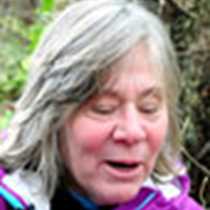At Sea & Bahia Bonanza, Isla Espiritu Santo
Pink hues illuminating the dramatic volcanic layers of Cabeza Mechudo on the Baja Peninsula and streaking the surrounding skies were an awe-inspiring start to a morning of cruising the productive waters of the Sea of Cortez.
Out on the bow, we scanned the sea and watched a few black storm petrels skimming the surface, their pointed wingtips nearly touching the tops of the small waves. Mid-morning, just as Sara was to begin a presentation, a group of about a hundred bottlenose dolphins were spotted, and the National Geographic Sea Lion slowed and maneuvered to grant us close looks at these small toothed whales. The dolphins were cruising at a rather leisurely pace that afforded us an opportunity for brilliant observation. Likely they were traveling following an early morning meal of small schooling fish such as sardines or anchovies. There were several female dolphins with their young ones perfectly mirroring the mother’s graceful movements. Bottlenose dolphins often stay near their mothers for several years and are at least a year old when they are weaned.
Tucked into the southeast corner of Isla Espiritu Santo is a two mile sweep of white sand beach called Bahia Bonanza. Turquoise water and a red rock backdrop made this a spectacular stop for our last afternoon. Whether sunning, swimming, hiking and birding in the desert or strolling the shell-strewn beach, we filled the afternoon with enjoyable activities.
Our time exploring the Gulf of California together has been special indeed. From the awesome sight of a blue whale mother and her calf, to the giant cacti of Isla Santa Catalina, this place reveals itself by reawakening our sense of wonder. Viewing a hawksbill sea turtle in these waters where they have been sadly absent is hope you can put in your pocket in a time when that commodity seems scarce. Here on our home planet, some of our conservation efforts are working! That’s some great news to bring into a new year of new beginnings.
Pink hues illuminating the dramatic volcanic layers of Cabeza Mechudo on the Baja Peninsula and streaking the surrounding skies were an awe-inspiring start to a morning of cruising the productive waters of the Sea of Cortez.
Out on the bow, we scanned the sea and watched a few black storm petrels skimming the surface, their pointed wingtips nearly touching the tops of the small waves. Mid-morning, just as Sara was to begin a presentation, a group of about a hundred bottlenose dolphins were spotted, and the National Geographic Sea Lion slowed and maneuvered to grant us close looks at these small toothed whales. The dolphins were cruising at a rather leisurely pace that afforded us an opportunity for brilliant observation. Likely they were traveling following an early morning meal of small schooling fish such as sardines or anchovies. There were several female dolphins with their young ones perfectly mirroring the mother’s graceful movements. Bottlenose dolphins often stay near their mothers for several years and are at least a year old when they are weaned.
Tucked into the southeast corner of Isla Espiritu Santo is a two mile sweep of white sand beach called Bahia Bonanza. Turquoise water and a red rock backdrop made this a spectacular stop for our last afternoon. Whether sunning, swimming, hiking and birding in the desert or strolling the shell-strewn beach, we filled the afternoon with enjoyable activities.
Our time exploring the Gulf of California together has been special indeed. From the awesome sight of a blue whale mother and her calf, to the giant cacti of Isla Santa Catalina, this place reveals itself by reawakening our sense of wonder. Viewing a hawksbill sea turtle in these waters where they have been sadly absent is hope you can put in your pocket in a time when that commodity seems scarce. Here on our home planet, some of our conservation efforts are working! That’s some great news to bring into a new year of new beginnings.




